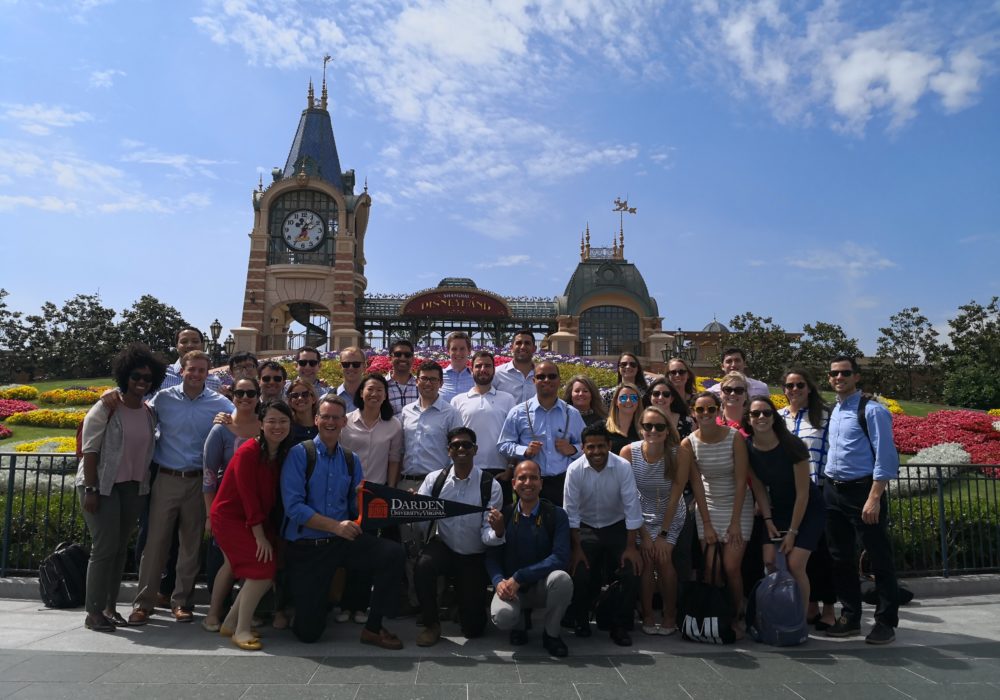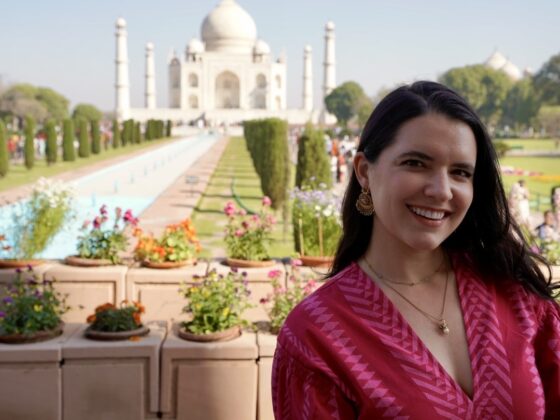Mike Christison (Class of 2019) was born and raised in central Illinois, then moved to the Washington, D.C. area after undergrad. Before Darden, he was the first hire at a startup marketing research consultancy based in Alexandria, Virginia. Currently, Mike is a second-year student finishing his dual MBA/MSDS degree and spent his summer interning at Microsoft in their Worldwide Commercial Business organization. After Darden, he hopes to work at a larger technology company on the west coast, leveraging his skills in data science and design thinking to improve internal products and processes.
Before arriving at Darden, did you plan to participate in a Darden Worldwide Course (DWC)? What attracted you to the DWC in China?
When I arrived at Darden, I was planning to take part in a Darden Worldwide Course, I just wasn’t sure yet which one. I have always wanted to visit as many countries in Asia as possible, and since I had already been to both Japan and Korea, China was next on my list. But my reasoning goes a little deeper than that: when I was in undergrad studying history, the head of our department was a sinologist, and I developed an interest in the evolution of culture in China. Setting personal reasons aside, it is incredibly important for business students to build an understanding of China, as it makes up such a huge portion of the global market. For these reasons, the global immersion course to China was my natural first choice.
What key lessons did you take away from the DWC to China?
I would say the single most important takeaway from visiting Shanghai was that “scale matters.” Because China is so large, the potential for absolute growth is huge. Twenty years ago, anyone paying attention knew that the more the Chinese populace could become consumers in addition to producers, the more likely we would be to see explosive growth. That explosion in growth has happened, and now we are seeing the results.
A perfect anecdote in Shanghai is looking at the roads and related regulation. The driving for a newcomer in Shanghai might be very anxiety-inducing. Lanes on raised highways carry cars packed like sardines traveling extremely fast. Roads are so crowded that Shanghai limits the number of licenses released each year, sets the price high, and holds a lottery to obtain them. Not only do they limit cars on the road, but they have also capped the population in Shanghai and Beijing. High population means more complex sustainability issues around density, food and waste.
What does the population size mean for doing business in China? Well, the ability for a company to scale is much stronger than in the U.S. The U.S. has only four cities with a population of over two million people. China has fifteen or so cities with over ten million. More people means more potential consumers; but, it also means more producers. The competition in China is extremely high and its markets are generally fragmented. While the U.S. may have a few large players dominating most of its industries, the same cannot be said for China. The largest players might only hold as much as 20% of their industry market.

How has participating in this course affected your view on business around the world?
In some of the Darden cases we study in our first year courses, students get to discuss how differences in culture have a strong effect on how to position a product or service for success. When traveling to another country, they get to see it firsthand. This was especially true when we had the opportunity to discuss Shanghai Disney, and then actually visit the park and see how it was different with our own eyes. What this drove home for me is that experiential learning can provide a perspective that often cannot be gathered through discussion alone.
But despite some stark differences in culture between China and the U.S., the fundamentals of business and economics are the same. The manufacturing plants we observed were using Kaizen and lean methodologies to improve their production, thinking about how to balance automation with human resources. A daily newspaper was contemplating how to move from print to digital and work with a new internal content-management system. A bank was trying to understand how they could utilize new technologies like AR, AI, and blockchain. As far as I see it, the challenges that companies in the U.S. and China face currently are essentially the same, even if the consumer markets were somewhat different in behavior and taste.
What was your favorite part of or memory from the course?
It is very hard to choose, but I’ll mention the time when we visited the homes of some Chinese families in Shanghai for lunch. A few families were gracious enough to allow us into their community and fix us an authentic meal (tailored to Western tastes, of course). What amazed me was that these homes we had visited were the first “high-end” condos built after the civil war in the 1950s. It is considered somewhat middle-class living today.
After we finished, we spent a little time outside waiting for the bus. Nearby there stood some colorful and strange outdoor exercise equipment in a public space. As we took turns fiddling with the equipment and trying to understand how it works, some neighbors walked by, amused by this strange group of foreigners in their workout space. People were met. Pictures were taken. Fun was had. Then we left on the bus to the next adventure.
What advice would you give to future students who are considering their options for global courses at Darden?
Definitely take this as an opportunity to choose an experience you haven’t had before. And if you have a chance, try to schedule some travel before and/or after with your classmates. This is something I wasn’t able to do because of prior engagements, but definitely do it if you can.
I can’t speak for the other global courses, but I highly recommend the Shanghai global immersion course. Given the level of influence China has on the world politically and economically, I would suggest that experiencing China should be high on the priority list.





